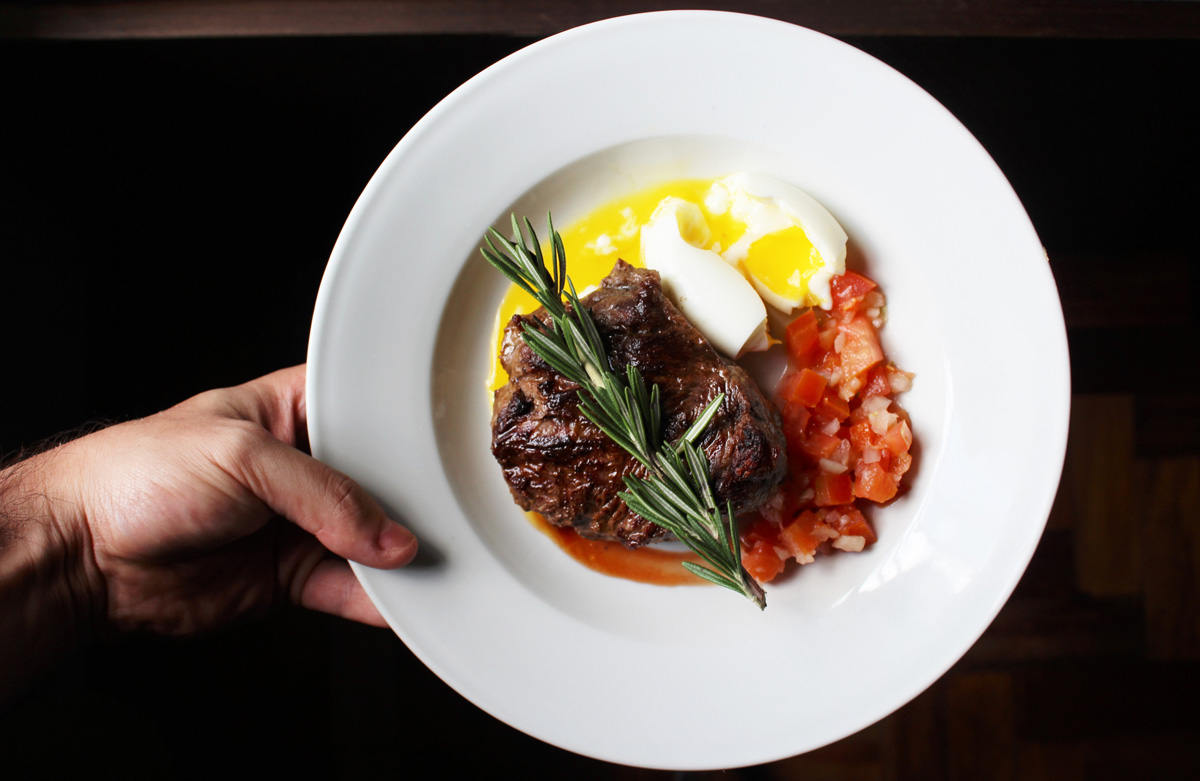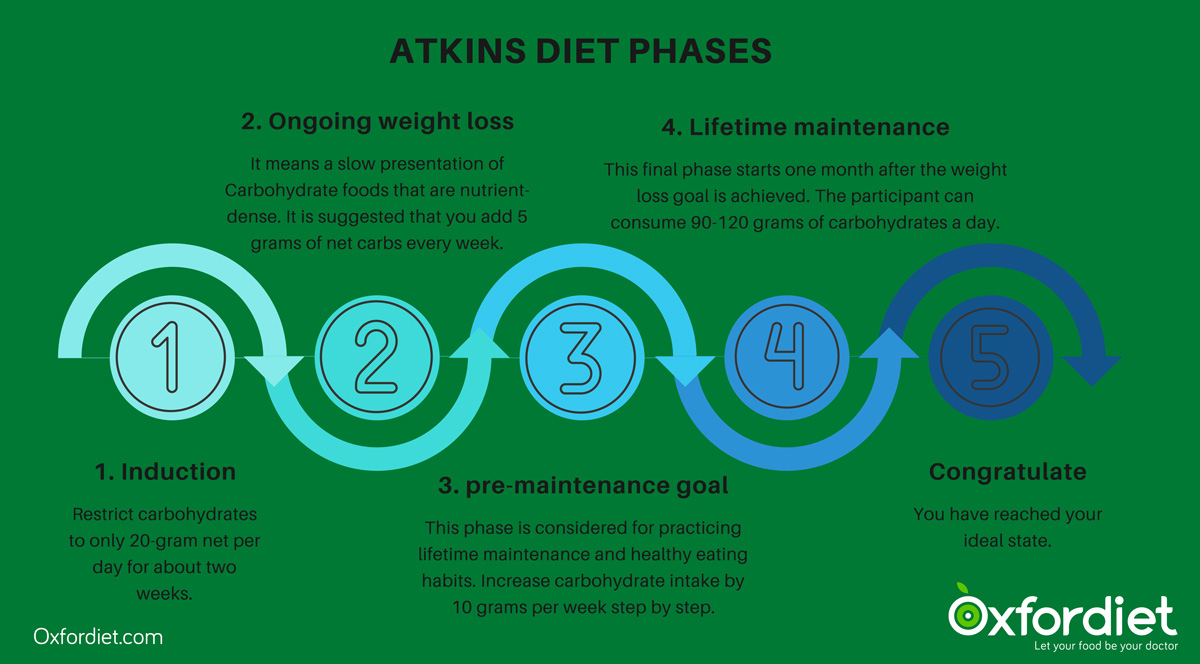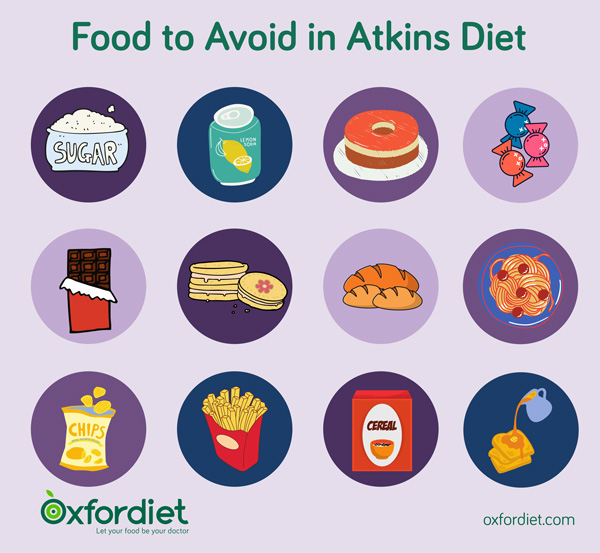The Atkins diet is named for Robert C. Atkins, Cardiologist, the diet's founder. The low-carb diet revolution started with the Atkins diet in 1972.
It has been one of the most popular fad diets.
The Atkins diet generally restricts carbohydrates and focuses on protein and fats. Dr. Atkins said that limiting carbohydrates (sugars and starches) would improve health and aid in weight control. The original premise for developing the diet came out because of Atkins' frustration with the increasing rates of obesity and chronic diseases such as diabetes. At least eight glasses of water per day are suggested in the Atkins diet to prevent constipation and dehydration.

It is a low-carbohydrate diet that is commonly used to lose weight. The restriction of carbs in the Atkins diet encourages the body to use fat rather than sugar for energy.
The Atkins diet consists of 4 distinguished phases that participants should go through to have a victorious weight loss.
The phases are:
Phase 1: Induction, Phase 2: Ongoing weight loss or balancing, Phase 3: Pre-maintenance, Phase 4: Lifetime maintenance
It is not a critical phase, but it is for jumping to the start of weight loss. The Atkins diet claims that the induction phase will help dieters see the benefits of fat-burning and strengthen their immune systems. Phase 1 is the most restrictive phase that allows only 20-gram net carbohydrates per day for about two weeks.
The participant can use abundant amounts of high protein foods such as meats, fish, poultry, eggs, and healthy fats (vegetable and seed oils). High-fat condiments (mayonnaise, sour cream, guacamole, butter) are also allowed. Weight loss during the induction phase can be significant. Although unlimited quantities of fats and proteins are allowed, it doesn't mean craving for overeating.
Phase two is a slow presentation of nutrient-dense Carbohydrate foods (whole grains, green beans, Brazil nuts, avocados, berries). Most of the carbs come from vegetables. This phase aims to continue burning and dissolving fat during maintaining appetite and craving control. It is suggested that you add 5 grams of net carbs every week.
In the first week of this phase, add 25 grams, and in the second week, 30 grams of carbohydrates are allowed. The addition of five grams per week continues until weight loss stops, then you have to drop back to the previous gram level. Typical tolerance can range from 30-to 90 grams per day. The level of tolerance depends on how much exercise a participant can take. The Atkins diet recommends using low carbohydrate vegetables and fresh foods high in fiber, such as cucumber, lettuce, and raw celery.
This phase is considered for practicing lifetime maintenance and healthy eating habits. The third phase begins when within 5 to 10 pounds of the weight-loss goal has been achieved. The diet follower increases carbohydrate intake by 10 grams per week step by step until the weight is gained, then drops back to the previous carbohydrate gram level. The follower should continue this phase until the weight is neither gained nor lost to confirm their lifestyle habits.
Foods that contain 10 grams of carbs are:
1/4 cup white potatoes
1/3 cup kidney beans
1/2 apple
1/2 cup acorn squash
1 cup beets
3/4 cup carrots
This final phase starts one month after the weight loss goal is achieved. The participant can consume 90-120 grams of carbohydrates a day. Still, it depends on each person's age, sex, and activity level. It is more common if the weight maintenance remains on the level discovered in phase 3 and you keep on this lifestyle.

This diet is more tasteful due to fats and considerable protein consumption and is more filling than other diets. The Atkins diet has been modified by the advice that can resolve the misunderstanding about the type of fats and overeating. There is no calorie counting in the Atkins diet. 35% of the calorie comes from protein, and the protein is not restricted in the Atkins diet. You don't have to fast before starting the Atkins diet. The Atkins diet's primary aim is weight loss, which is a big deal in today's societies. Due to the number of carbohydrates changes, the Atkins diet can be a fascinating way to adhere to and follow. Despite using a high percentage of fats during the Atkins diet, cholesterol levels will decrease in many individuals through weight loss.
Some Atkins diet followers have reported suffering from muscle cramps, diarrhea, general weakness, constipation, bad breath, headache, fatigue, and rashes more frequently than people on low-fat diets. People on the Atkins diet need to consume high-fiber vegetables to prevent and also drink plenty of water.
Although every diet focuses on eating healthy and unprocessed foods, there are many bars, shakes, candies, and nutritional snacks produced by companies titled Atkins products.
Due to the consumption of unlimited fats, the cholesterol level may increase. It is the risk factor for heart and coronary diseases. There are not many long-term trials to convince us whether the diet harms heart function and arteries or not. Atkins's diet is high in protein, so it may not be appropriate for those suffering from kidney diseases.
Lowering the level of carbohydrates leads to increased ketone levels.
The Atkins diet may bring some deficiencies that you should take supplementation.
It is a very simple formula.
Atkins Net Carbs = Total Carbs – Fiber/Sugar Alcohols/Glycerin
You should avoid eating the following foods in the Atkins diet:
♦ Sweetened carbonated drinks with sugar and syrups
♦ Soft drinks
♦ Sweets
♦ Cakes
♦ Candies
♦ Chocolate
♦ Biscuits
♦ Bread
♦ Chips
♦ Potatoes
♦ Pasta
♦ Cereal-based foods

The foods on the Atkins diet food list are categorized into groups, and you should know which one to eat throughout each phase of the Atkins diet.
In phase 1 of the Atkins diet, you are allowed to eat 20 grams of net carb per day, so you should avoid these foods:
Nuts, berries, cherries and grapes, dairy products, legumes, fruits and juices, carbonated beverages, vegetables and carrots, rice, wheat, barley, and potatoes
In phase 2 of the Atkins diet, eat 25-40 grams of net carbs per day. You can have more varied foods than in the first phase and lose weight during this phase. Vegetarians or raw food eaters start the Atkins diet from phase 2 and consume only 30 grams of pure carbohydrates per day. Phase 2 allows you to add 5 grams of net carbohydrates to your daily diet. It is best to add nuts and oilseeds, a small number of strawberries, low-fat dairy, and legumes. You should pay attention to the fact that adding foods should be done slowly. Each day you can consume 10 grams of carbs for each main meal and 5 grams of net carbs for 2-time snacks.
You can consume 6-8 servings of Foundation vegetables, three servings of protein, three servings of added fats, and 3- 5 servings of other carbohydrates, which serving contains 5 grams of net carbs.
You are allowed to consume 40 to 100 grams of net carbohydrates per day. Reaching this phase will be a great achievement for you. If your weight loss progress stops, increase your intake of pure carbohydrates to 10 grams per day to start losing weight again.
3-5 servings of proteins, three servings of added healthy fats
In phase 4 of the Atkins diet, you have reached your ideal state; you know how much Net Carb your body needs per day and how much it does not cause you to gain weight, and you also learn what types of snacks to eat and when to reduce your carbohydrate intake.
In this phase, you are also allowed to use Atkins pasta and low-fat protein.
You can contact the nutritionist to get your specific and designed Atkins diet plan.
Both Atkins and keto diets are low carb, but they are not exactly alike.
The first phase of the Atkins diet is similar to the keto diet; both go through the ketosis function due to the restriction of carbohydrates. The keto diet and the Atkins diet can be weight-loss diets, but they have some differences.
The Atkins diet is higher in protein, increasing the number of carbohydrates throughout the stages. Still, the keto diet will remain on the ketosis function till the end.
The Atkins diet is more comfortable due to the wider choice between foods available in the Atkins diet plan and food list.
Despite the keto one, you don't need to monitor your ketone body level during the Atkins diet.
The Atkins diet doesn't develop kidney stones compared with the Keto diet.
Isn’t too much protein dangerous?
Hi Leo,
There are many concerns about overeating protein, including osteoporosis, kidney damage, gout, decreased longevity, etc. Some concerns were eating too much protein results in turning protein to sugar via gluconeogenesis. However, till now, all these concerns are largely unfounded.